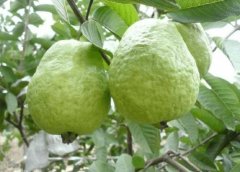Tomato sleeve grafting technology introduction, tomato artificial grafting method and mechanical grafting method difference method
Tomato is a kind of vegetable that we all like to eat. We also have many ways to grow tomato. Do you know the grafting technology of tomato? do you want to know about it?
Sleeve grafting technique
The grafting method of tomato is commonly used for oblique cutting, and external objects are needed to subsidize and fix it, such as various grafting clips, rubber sleeves, bone needles and plastic needles, etc., in order to increase the close combination of rootstocks, among which rubber casing (bicycle inner tube wind hose, sub-vegetable center development method) is widely used by ordinary farmers because of its cheap consumable materials, convenient operation, good moisture retention and high survival rate.
At present, the sleeve grafting technology widely used in China mainly uses eggplant as rootstock and tomato as spike wood, which can be divided into artificial grafting and mechanical grafting.
Artificial grafting method
First, eggplant and tomato seedlings with a stem of about 1.8~2.8mm were selected with an ultra-thin blade above the cotyledons between the cotyledons and the first leaf, and cut off at an angle of 30 degrees; the left hand gently grasped the lower half of the rootstock; the right hand took a rubber hose with an inner diameter of about 2mm and a length of about 8mm; cut into the stem to half the depth of the hose. The scion seedlings are selected above the first leaf; where the inner stem is commensurate with the rootstock, cut off at an oblique angle of 30 degrees, right hand straighten the rootstock plant, and gently pinch the hose; hold the panicle lightly with the left hand; align the cuttings with the slant of the rootstock; insert the rubber casing down; gently push straight to ensure that the slant of the rootstock is fully connected.
Mechanical grafting
Mechanical grafting is different from artificial grafting, except that the action of taking seedlings, hanging seedlings and moving grafted seedlings into the hole plate is done manually, the other grafting processes are all completed by machinery. first of all, eggplant and tomato seedlings with a stem of about 2.2~3mm are used, eggplant seedlings are taken by the left hand, the stem is placed in the clamping clip of the left rootstock of the grafting machine, the left foot is pressed on the left pedal switch, and the tomato seedlings are taken by the right hand. Place the stem above the first leaf in the right ear wood clamping clip of the grafting machine, and press the right foot pedal switch to complete the ear wood clamping (if the action is skillful, the seedlings can be taken and hung by both hands at the same time), the grafting machine will automatically complete the grafting action, and the grafting seedlings will be sent out automatically, and the seedlings will be taken back and placed into the burrow plate manually.
The grafted seedlings should be placed in the health care room for about 2-3 days to heal, and then moved to the facility for about a week before they can be planted in the field. After planting, the grafting hose of the seedling falls off naturally due to the growth of the stem in the plant and the aging effect of sun exposure. there is no need to worry about artificial loosening, so it is more labor-saving than other grafting methods.

- Prev

Emperor guava variety introduction, Taiwan red meat/Yilan red meat/Yan Chao rainbow guava variety that good
Guava is also called guava, guava planting technology is relatively easy, do you know which guava varieties? If you don't want to know, let's take a look at the following four varieties and see if you have eaten them! Tainong No. 1 (Imperial Guesthouse) Introduction: 2006 by
- Next

According to the introduction of rice variety Taibian 17, what are the shortcomings and weaknesses of the characteristics of Taimian 17?
Rice is one of our staple foods, which is very important for the cultivation and cultivation of new varieties of rice. Do you know the rice variety No. 17? Variety characteristics 1. General agronomic character Taibian 17 is a mid-late maturing variety with the first growth days (from transplanting to maturity).
Related
- The first cup of black tea in spring, the flavor and history of tea gardens in Kenya, Africa
- The computer can not only choose potatoes, but also grow tea rice. AI will grow winter oolong tea champion.
- It is not only the inflated tea bitten by insects, but also engraved with the four seasons tea in Beipu.
- The Oriental Beauty Tea Festival in Zhuxian County takes the stage at the weekend to experience the plus-size feast of oil tea.
- & quot; Oriental Beauty Tea & Exploration of Emei in Hsinchu, the hometown of quot;
- The new variety of strawberry "Tainong 1" dessert is the first choice with mellow aroma. Crimson gorgeous
- History of Tea in Taiwan: from Wild Inner Mountain to Export Tea Garden
- Two types of Taiwan Oriental Beauty Black Tea won the British three-Star Award for Childhood Tea Xiang Zhang Jiaqi changed from pilot to champion tea maker.
- Banana species and varieties: the planting history of Taiwan Xianren banana and dwarf banana is long, is banana disease resistant?
- Coffee planting Technology: Qianjie Coffee from Seedling to harvesting

